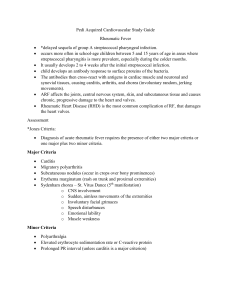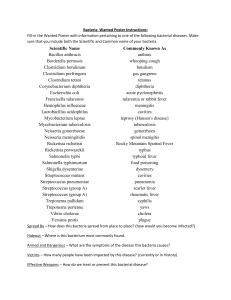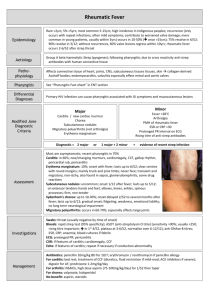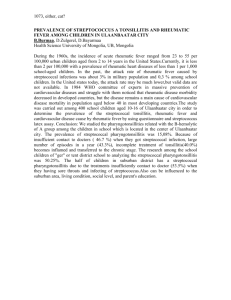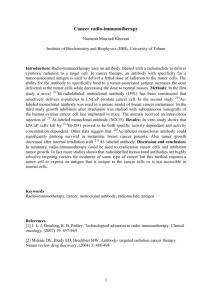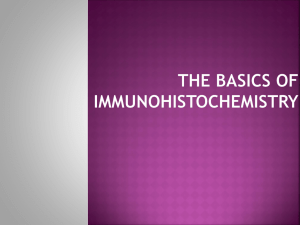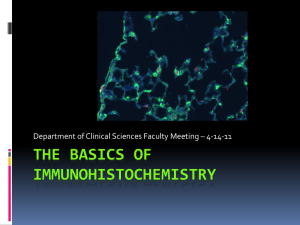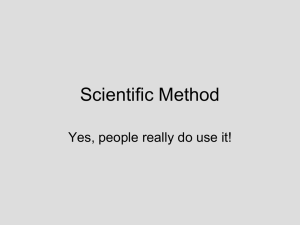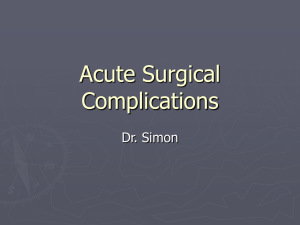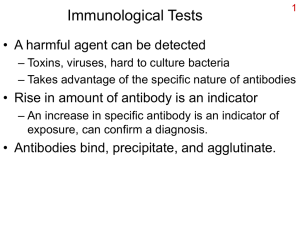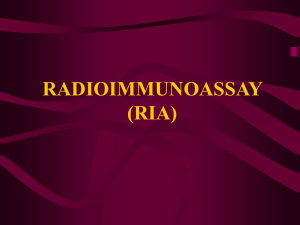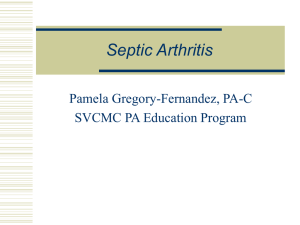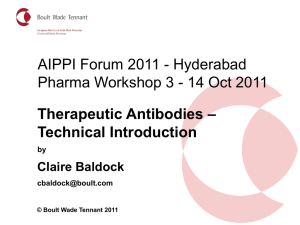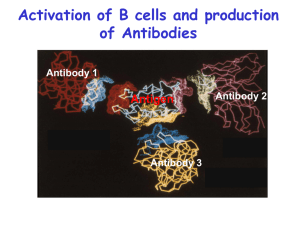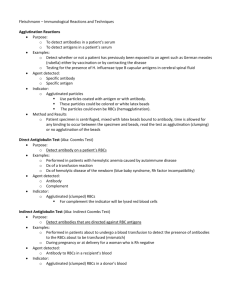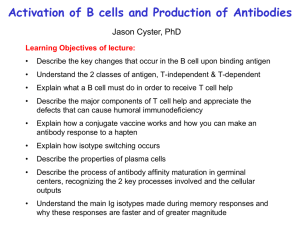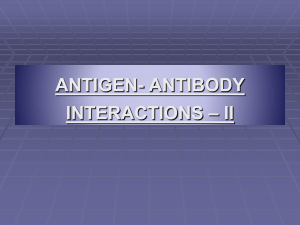三、确诊依据
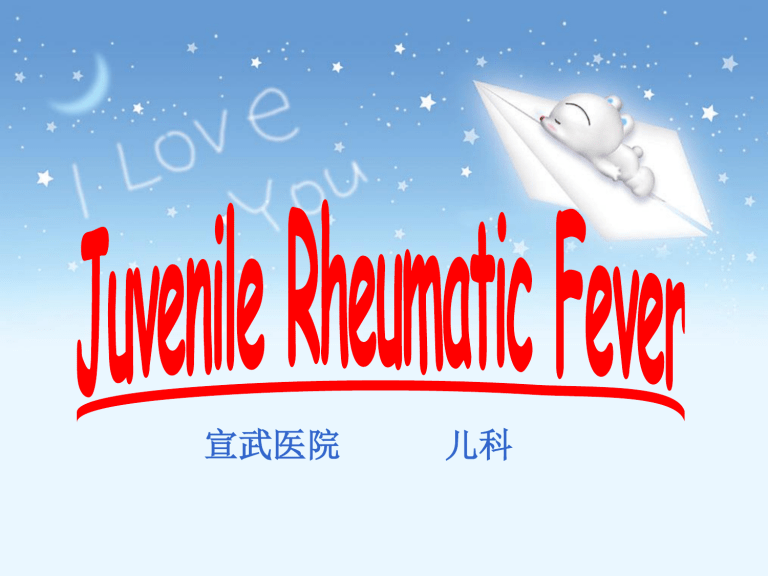
宣武医院 儿科
I. Definition
General connective tissue disease
Autoimmune disease
(B type ,A group Strep.)
forerunner infection 1 to 4 weeks ago,Scarlet
Fever,Tonsillitis
ASO ↑
Penicillin , RF ↓ , only 3~5% morbility
trend of recurrent attack
main clinical manifestions
Fever
Migratory Polyarthritis
Carditis
Chorea
Annular erythem and subcutalleous nodules
II. pathogenesis
i. Molecular simulation for Streptococcus antigen
B type, A group heamolytic strept. and the metabolite
Antibody of strept.
Cell wall antibody of strept. membrane antibody of streptococcal extrotoxins and enzymes
Anti-M antibody cross reaction to human Vessel base membrane antibody of other cross reaction to human connective tissue and glycoprotein of heart valve cross reaction to human skeletal , muscle of heart and smooth muscle arteriole
ASO , antihyaluronidase, antisreptokinase, antideoxyribose , etc.
no cross reaction to human tissues
ii. Immunocomplex antigen,antibody,complement iii. Damage of Cyto-immunity
1) lymphocyte increased respond for Streptococcus antigen
2) increased of leukocyte magration inhibition test decreased of blast transformation and hyperlasia
(multiplication) reaction increased of nature killer cyto-toxic
3) the monocyte immuno-reactive abnormaly to Streptococcus antigen in patient tonsil iv. heredity the alloantigen in lymphocyte in the patient with rhumatic fever 99% postive in the normal people 14% postive
III. Pathogen
Exudation phase :
1~2months arthrosis 、 synovial menbrane 、 pericardium 、 pleura 、 progresion of exudation and degeneration
Proliferative phase :
3~4 months progression of grenuloma : myocardium interstitial tissue 、 subendocardium 、 skin.
base of rheumatism activity mark of rheumatism activity
Sclerosis phase :
5~6months endocardium 、 bicuspid valve 、 tricuspid valve 、 scarification
IV. Clinical manifestions
general signs
Fever, Pale, Listless, poor appetite, Lose weight ,
Sweat (hyperidrosis), fatigue, tiredness, nose blood (epistaxs) abdomen pain
Active carditis heart rate/temperature increased heart rate, gallop rhythm heart sounds weaken cardiac enlargement 5%~10% congestive heart failure heart beat spread all over the precordial aortic insufficiency. systolic murmur mitral stenosis murmurs : SM : mitral incompetence → half year
DM : relative stenosis of mitral → more than 2 years prolonged PR interval pericaditis :
polyarthritis migratory fashion heat,redness,swelling,severe pain knees hips wrists ellbows shoulders
sydenham chorea combined with heart lession 40% emotional instrability and involuntary movements ataxia and slurring of speech——disphasia agraphia fine movement incoordination
skin lession Erythema Marginatum subcutaneous nodule joints,scalp,spinalcolumn etythma annulare
others pheumonia 、 pleuritis etc
V. lab exammination
i. blood routine ii. ESR ↑ :important mark iii. ASO : 2w ↑ , 2m ↓ 20%no step up iv. detemination of special protein
1). CRP
2). mucoprotein
3). completment
α γ globulin , IgG 、 IgM ↑
VI. Diagnosis
Jones criteria (modified) for diagnosis of rheumatic fever
Major manifestations
carditis polyarthritis sydenham chorea erythema marginatum subcutaneous nodules
Minor manifestations clinical:
previous rheumatic fever or rheumatic heart disease polyarthralgia fever
Laboratory:
accute phase reaction, elevated erythrocyte sedimentation rate,C-reaction protein,leukocytosis prolonged PR interval
PLUS
Supporting evidence of preceeding streptococcal infection. that is : increased titers of antistreptolysin O or other streptococcal antibodys, positive throat culture for group A streptococcus.
VII. Differential diagnosis
i. post-streptococcal infection ii. viral myocarditis iii. juvenile rheumatoud : chronicity 、 symmetry 、 progressive 、 inflamatery 、 destructive diseases
VIII. Treatment
i. general treatment bed rest ii. Diet iii. control of focus of infection iv. anti-rheumatisn
8~12weeks cortica hormone salilytic acid 3~6weeks v. treatment of heart failure vi. chorea
IX. prognosis & prophylaxis early diagnosis thoroughly treatment reasonable prophylaxis
病毒性心肌炎诊断标准
一、临床诊断依据
(一)心功能不全、心源性休克或心脑综合征。
(二)心脏扩大( X 线、超声心动图检查具有表现之
一)。
(三)心电图改变:以 R 波为主的 2 个或 2 个以上主要导
联( I 、 II 、 aVF 、 V5 )的 ST-T 改变,持续 4 天以上伴
动态变化,窦房传导阻滞、房室传导阻滞、完全性右或
左束枝阻滞,成联律、多形、多源、成对或并行性早
搏,非房室结及房室折返引起的异位心动过速,低电压
(新生儿除外)及异常 Q 波。
(四) CK-MB 升高或心肌肌钙蛋白( cTnL 或 cTnT )阳
性。
二、病原学诊断依据
(一)确诊指标:自患儿心内膜、心肌、心包(活检、病
理)或心包穿刺液检查,发现以下之一者可确诊心肌炎由
病毒引起。
1 、分离到病毒。
2 、用病毒核酸探针查到病毒核酸。
3 、特异性病毒抗体阳性。
(二)参考依据:有以下之一者结合临床表现可考虑心肌
炎病毒引起。
1 、自患儿粪便、咽拭子或血液中分离到病毒,且恢复期血
清同型抗体滴度较第一份血清升高或降低 4 倍以上。
2 、病程早期患儿血中特异性 IgM 抗体阳性。
3 、用病毒核酸探针自患儿血中可查到病毒核酸。
三、确诊依据
(一)具备临床诊断依据 2 项,可临床诊断为心肌炎。发病
同时或发病前 1~3 周有病毒感染的证据支持诊断者。
(二)同时具备病原学确诊依据之一,可确诊为病毒性心
肌炎,具备病原学参考依据之一,可临床诊断为病毒性心
肌炎。
(三)凡不具备确诊依据,应给予必要的治疗或随诊,根
据病情变化、确诊或除外心肌炎。
(四)应除外风湿性心肌炎、中毒性心肌炎、先天性心脏
病、结缔组织病以及代谢性疾病的心肌损害、甲状腺功能
亢进症、原发性心肌病、原发性心内膜弹力纤维增生症、
先天性房室传导阻滞、心脏自主神经功能异常、 β 受体功能
亢进及药物引起的心电图改变。
四、分期
(一)急性期:新发病,症状及检查阳性发现明显且多
变,一般病程在半年以内,
(二)迁延期:临床症状反复出现,客观检查指标迁延不
愈,病程多在半年以上。
(三)慢性期:进行性心脏增大,反复心力衰竭或心律失
常,病情时轻时重,病程在 1 年以上。
